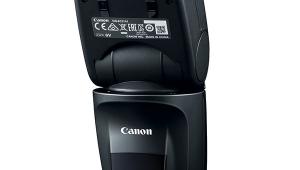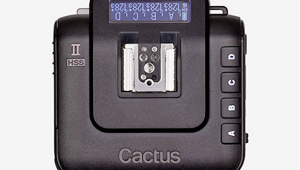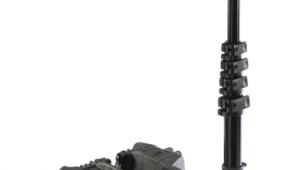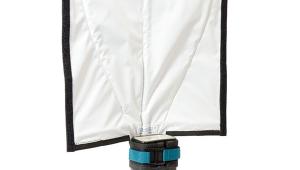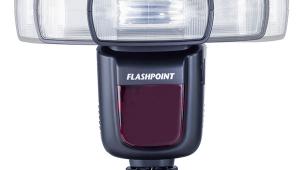Lighting & Studio; Continuous Light, LEDs, And Flash In A Rainstorm
In all probability, most photographers could gain more from investing in lighting equipment than from investing in new cameras. Not professionals, perhaps, though studio lighting continues to come on in leaps and bounds, but countless amateurs could greatly improve both the range and quality of their work by investing a few hundred dollars in lights rather than in yet another substantially illusory “upgrade” from last year’s camera to this year’s model.
 |
|
|
Actually, even professionals could benefit a lot from looking at what’s available today, as compared with what was available when they started their professional careers. Profoto, for example, has just moved into continuous lighting after decades of concentrating on flash, and one of their cleverest tricks is offering the maximum possible interchangeability between different light sources, tungsten, HMI, and flash.
Now, it’s a fair question why anyone might want to do this, but the answer is a recurring theme of photokina 2010: the crossover between video and still photography. More and more people are shooting both on the same set, and indeed, sometimes with the same cameras. Leaving the same basic lighting unit in place but changing the light source means that there is less need to compromise: you have the choice of using flash for sheer raw power with single shots, or continuous lighting where freezing action and depth of field may not be so important. And, of course, it’s quicker and easier than pulling down one set of lights and putting up another.
 |
|
|
Paterson, already well-known for their darkroom equipment, introduced a line of lighting equipment at photokina. It’s not the most technically advanced equipment on the market, nor the cheapest, but it’s more than versatile enough for the vast majority of purposes and it’s not expensive. Most importantly, it’s very durable and it’s made at their own factory in the West Midlands in England.
Sheer raw quality is especially important if you are going to be using lighting equipment under hostile conditions, and a display on the Bron stand brought this home with a bang. Well, fortunately not with a bang, actually. They had a row of Kobold electronic flash units under a steady drizzle from an agricultural irrigation pipe. For that matter, on the Ultima Digital stand there was a monobloc flash that was actually designed to be used underwater. Only a few years ago, either would have been an invitation to sudden death: very high voltages and generous amounts of water are a truly lethal mixture.
 |
|
|
Interfit started out as a spin-off from Paterson, again based in the UK (but with a North American arm) and they make straightforward, affordable (but not cheap) lighting equipment. Something we’d really like of theirs is their latest “beauty light,” also known as a “bowl and spoon”: a huge shallow reflector maybe 3 feet in diameter (the “bowl”) with a small cap over the actual light source in the middle (the cap is the “spoon”). In many cases, a “beauty light” is interchangeable with a softbox; in a few cases, it’s actually better and more versatile; and only surprisingly rarely is a softbox a better bet. We’ve used their small beauty light for years, and we’d love to have the big one, too.
Like a number of other companies, Interfit were offering continuous lighting systems with more and more screw-in fluorescent bulbs. Again, we’ve been using their original three-bulb head for years but they now have five-bulb and even seven-bulb heads. As these deliver several times as many lumens per watt as tungsten bulbs, and run a lot cooler, it is perfectly feasible for even the amateur studio to have the equivalent of a couple of thousand watts of tungsten light by using fluorescents, without requiring heavy-duty cabling and without melting the subject, the cameras, or the light modifiers.
 |
|
|
LED
These multi-fluorescent heads are one trend, and multi-LED heads are another, whether they are small enough to be mounted on a camera hot shoe (like the latest Kaiser/Seculine unit) or massive studio units. Numerous manufacturers offered the latter, including some who were not previously known for lighting, such as Manfrotto.
Kaiser offered a couple of LED “ring flashes”: not flash, of course, but surprisingly useful when you are shooting macro or close-up. They also produce interesting portraits, though “interesting” in this case may look better on a CD sleeve than on the wall.
In both cases, fluorescent and LED, an important point is that the light sources are not all created equal. The better (read: more expensive) lamps and LEDs have a much more continuous spectrum, better matched to daylight, and more consistency from batch to batch. Sure, you can do a great deal with custom white balances, but you’ll do better still with better light sources to begin with.
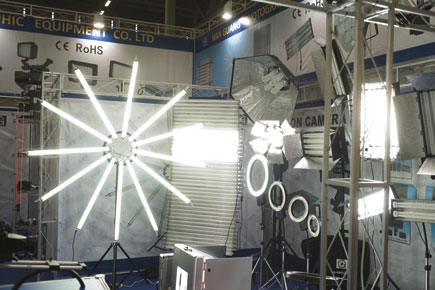 |
|
|
- Log in or register to post comments

